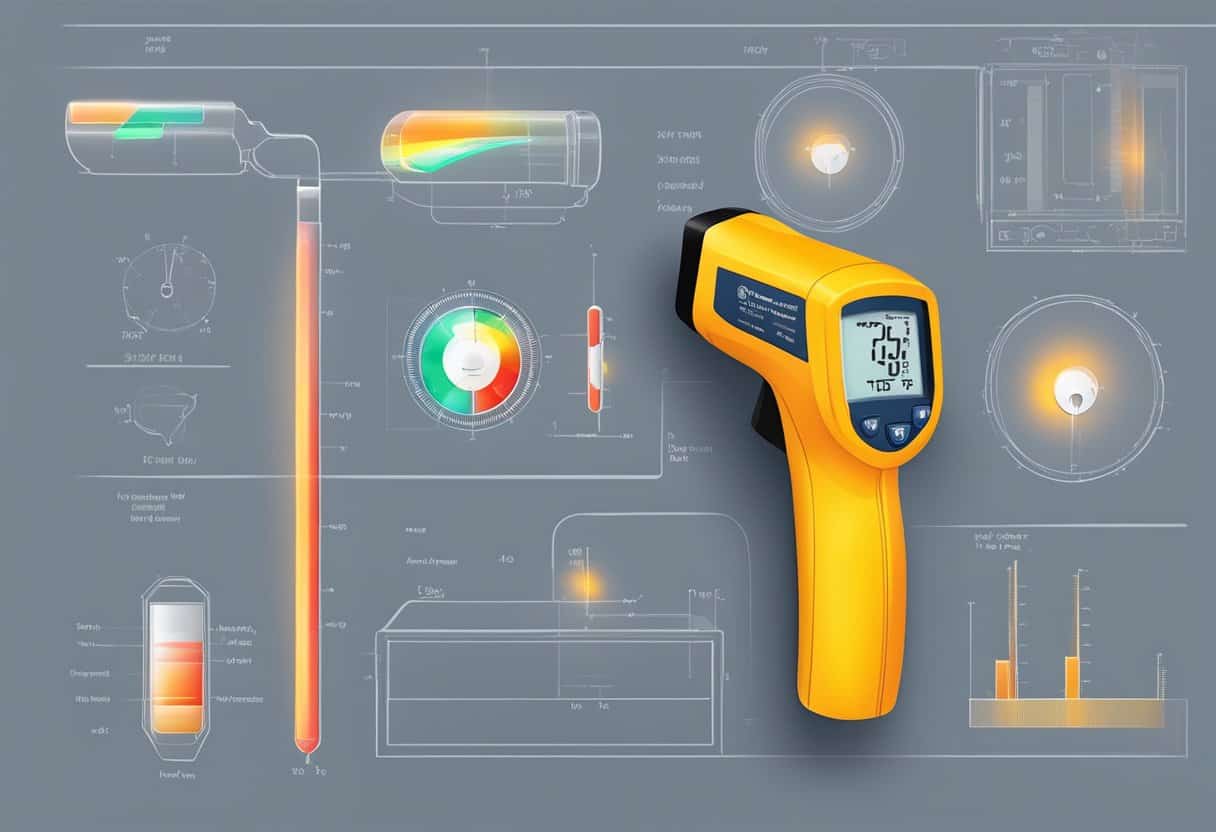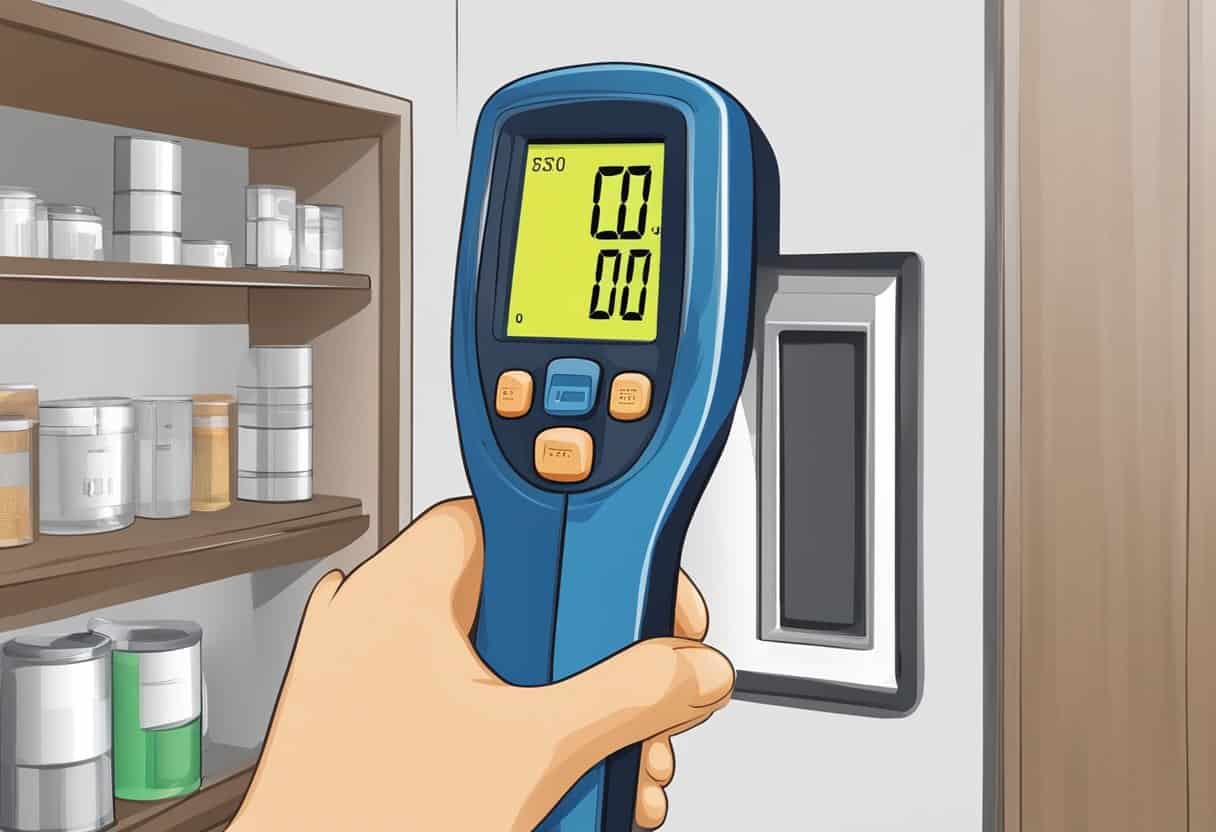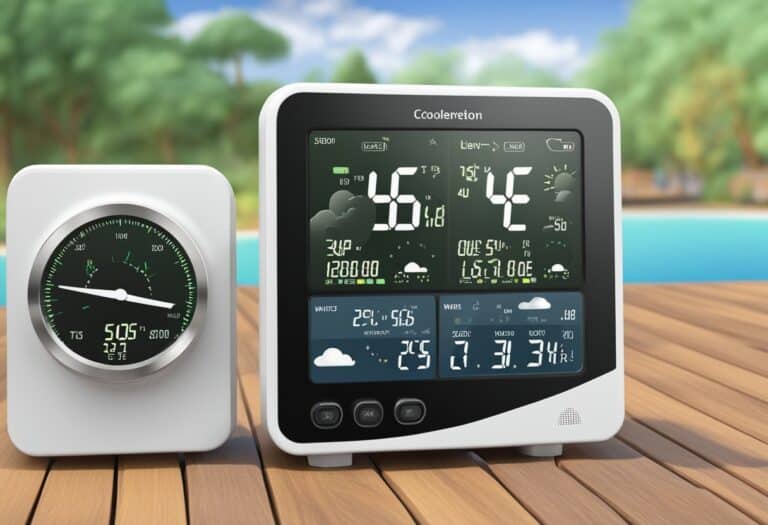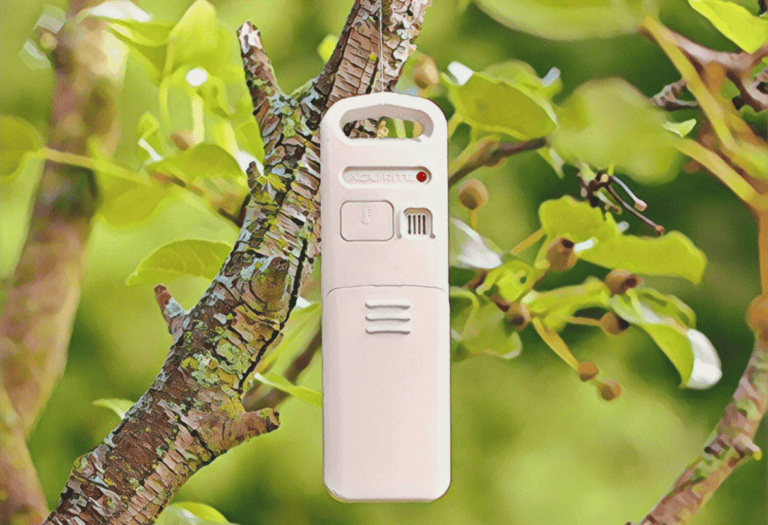Infrared thermometers have become indispensable tools in various industries due to their ability to measure temperature without making contact.
This feature is especially crucial in scenarios where the object to be measured is either too hot, too small, or too difficult to reach with traditional thermometers. They are designed for quick and convenient use, which makes them ideal for a broad range of applications, from medical settings, where they provide rapid patient temperatures, to industrial environments, where they help monitor manufacturing processes.
Understanding how infrared thermometers work is fundamental to utilizing them effectively. They operate by detecting the infrared energy emitted by objects and converting that energy into a temperature reading, which is then displayed on the device’s screen.
The ability to measure temperature from a distance not only enhances safety when dealing with high-temperature objects but also minimizes contamination risks, a factor that’s particularly important in food safety and healthcare.
Infrared thermometers measure temperature from a distance without contact, essential in medical, industrial, and culinary fields for quick, safe, and hygienic readings. They work by detecting emitted infrared energy, converting it to a temperature display, crucial for high-temperature, hard-to-reach, or contamination-sensitive objects.
Understanding Infrared Thermometers
In the realm of temperature measurement, infrared thermometers stand out for their ability to gauge temperature from a distance. They leverage the principles of infrared energy, offering a non-contact solution that’s fast and efficient.
Basics of Infrared Technology
Infrared thermometers, also known as laser thermometers, operate on the principle that all objects emit infrared energy as a function of their temperature. By detecting this energy, an infrared thermometer can calculate an object’s temperature. The crux of this technology lies in a component called a thermopile, which absorbs the infrared radiation and converts it into electrical signals corresponding to the temperature.
Design and Components
The design of an infrared thermometer features a lens to focus the infrared radiation onto the detector, which contains the thermopile. The lens is a crucial component as it determines the field of view and affects the accuracy of the temperature reading. The detector transforms the accumulated infrared radiation into an electrical signal, which is then processed and displayed as a temperature reading on the device.
Emissivity and Its Importance
Emissivity is a measure of an object’s ability to emit infrared energy and is essential for accurate temperature readings. Materials with high emissivity, like organic materials and painted surfaces, are easier to measure accurately, while low-emissivity materials, such as polished metals, pose more of a challenge. Infrared thermometers often come with an adjustable emissivity setting, allowing you to calibrate the device for different materials, ensuring precision in the displayed temperature.
Applications of Infrared Thermometers

Infrared thermometers are essential tools for precise temperature measurement across various industries. These devices allow you to quickly and safely gauge surface temperatures without making direct contact.
Industrial and Manufacturing Uses
In the industrial arena, infrared thermometers are indispensable for monitoring machinery and processes. Surface temperature measurements are crucial to ensuring equipment operates within safe parameters and to avoid overheating. Precise temperature control can detect potential failures before they cause downtime. For example, you can use these tools to check the temperature of motors, bearings, and other critical components in a manufacturing setting.
Food Safety and Cooking
Your kitchen practices, whether at home or in commercial settings, can be safer with the use of infrared thermometers. They ensure that food is stored and cooked at proper temperatures to maintain food safety standards. A quick scan of the surface of your cooking surface or refrigerated case can provide an immediate temperature reading, which is particularly useful for verifying if a grill is ready for cooking or if stored food is being kept cool enough.
HVAC System Maintenance
Maintaining HVAC systems requires regular temperature assessments to ensure efficient operation and comfort in buildings. An infrared thermometer can check for hot and cold spots, verifying that systems are functioning correctly. During a maintenance check, surface temperatures of ducts and vents can be inspected to diagnose potential issues or to confirm proper insulation and airflow.
Health and Public Safety
In health and public safety, infrared thermometers have seen a rise in utilization due to COVID-19 for their ability to screen for fever—a common symptom of the virus—without physical contact. These thermometers, when used in a workplace or public setting, can be a first line of defense in identifying individuals with elevated temperatures. The device’s emissivity setting is adjusted to account for human skin, aiming to provide accurate readings for medical assessments.
How to Use an Infrared Thermometer
Using an infrared thermometer requires understanding its features and limitations to ensure precise temperature readings. Familiarity with the operating procedure, accuracy optimization, and awareness of its constraints is vital for effectiveness.
Operating Procedures
Before starting, ensure your infrared thermometer is calibrated correctly. Aim the thermometer at the object or surface you’re measuring, keeping in mind the distance-to-spot ratio; this indicates the diameter of the area that will be measured in comparison to the distance from the target. For example, with a 12:1 ratio, if you stand 12 inches away from the object, you’re measuring a 1-inch spot size.
- Turn on the device and point it at the surface whose temperature you need to measure.
- Pull the trigger to take a reading; the laser guide (if available) should help in pinpointing the area.
- Wait for the reading to stabilize, which typically takes a few seconds.
- Record the reading displayed, noting the ambient conditions as they can influence the measurement.
Optimizing Accuracy
To optimize the accuracy of your infrared thermometer:
- Verify that the emissivity value is set according to the material you are measuring. Most materials have an emissivity between 0.95 and 0.97.
- Clean the lens and sensor periodically to ensure there is no debris affecting the reading.
- When measuring surface temperatures, make sure the target is larger than the spot size measured by the thermometer.
- Avoid extreme temperature changes; allow the thermometer to acclimate to ambient temperature before use if it has been in a very hot or cold environment.
Understanding Limitations
Be aware of the limitations of your device to avoid inaccurate readings:
- An infrared thermometer cannot measure internal temperatures; it only reads the surface temperature of an object.
- Transparent surfaces like glass can be challenging since they may allow IR radiation to pass through instead of being absorbed and re-emitted.
- The accuracy can be influenced by objects’ emissivity, environmental factors, or the presence of dust and moisture.
- Understand that not every material or situation allows for precise temperature measurement with an infrared thermometer; always refer to the user manual for specific limitations.
Choosing the Right Infrared Thermometer
When selecting an infrared thermometer, your focus should be on the tool’s features and how they align with your needs. Precision, ease of use, and reliability determine the suitability of the device for your specific application.
Features and Specifications
-
Accuracy: Your infrared thermometer’s accuracy is paramount, as it determines the reliability of the readings you obtain. Look for a device with a low margin of error, usually denoted as a range (±2°C, for example).
-
D
Ratio: The distance-to-spot (D) ratio affects the area that the thermometer can accurately measure from a certain distance. A higher Dratio allows for temperature measurements from a greater distance. -
Laser Guide: Select a thermometer with a built-in laser to help you pinpoint the exact measurement area.
-
Readings: Consider the speed of obtaining a reading and whether the device displays in both Celsius and Fahrenheit.
-
Design: Choose a thermometer with an ergonomic design for comfortable, extended use.
Important Considerations for Selection
-
Temperature Range: Ensure the thermometer covers the entire temperature range you need to measure. Temperature guns designed for industrial use typically have a wider temperature range.
-
Application-Specific Features: For clinical use, prefer devices that have been tested for medical application, focusing on their suitability for the intended user group, such as children or the immunocompromised.
-
Advantages: Infrared thermometers offer non-contact measurement, which is beneficial in clinical environments to reduce cross-infection risks.
Remember, your selection should meet the required specifications for your intended use while providing the best balance between functionality and cost-effectiveness.
Frequently Asked Questions
Infrared thermometers offer a non-contact temperature measurement option, are quick to use, and provide a sanitary way to take someone’s temperature.
How does an infrared thermometer work?
Infrared thermometers measure the heat emitted by the body or object to determine its temperature. They use a lens to focus the infrared light from one object onto a detector, which converts this energy into an electrical signal that can be displayed in units of temperature.
What are the advantages of using an infrared thermometer for cooking?
Using an infrared thermometer for cooking allows you to measure the surface temperature of food instantly without direct contact. This is ideal for checking how hot a pan, grill, or oil is before cooking, ensuring optimal cooking temperatures are reached.
What is the accuracy range of an infrared thermometer?
The accuracy range of an infrared thermometer can vary, typically within ±2°C or ±4°F. However, some high-quality models can offer even greater accuracy, which is essential for medical or scientific use.
What are the different types of infrared thermometers available?
There are several types of infrared thermometers, including ear thermometers that are often used in a medical context and non-contact thermometers for industrial and culinary purposes. Each type is designed for its specific application, with variations in range and accuracy.
How do you properly use an infrared thermometer on the forehead?
To properly use an infrared thermometer on the forehead, aim it at the center of the forehead, holding it perpendicular to the skin, and ensure there’s no hair, sweat, or hat obstructing the area. The distance should typically be between 1 to 6 inches, depending on the manufacturer’s instructions.
What are the safety considerations when using an infrared thermometer on humans?
When using an infrared thermometer on humans, ensure that it is specifically designed for medical use and that it is used as per the manufacturer’s guidelines. Avoid pointing it at the eyes, as the laser can cause harm. It’s crucial to keep the sensor clean and to avoid dropping the device to maintain its accuracy.







